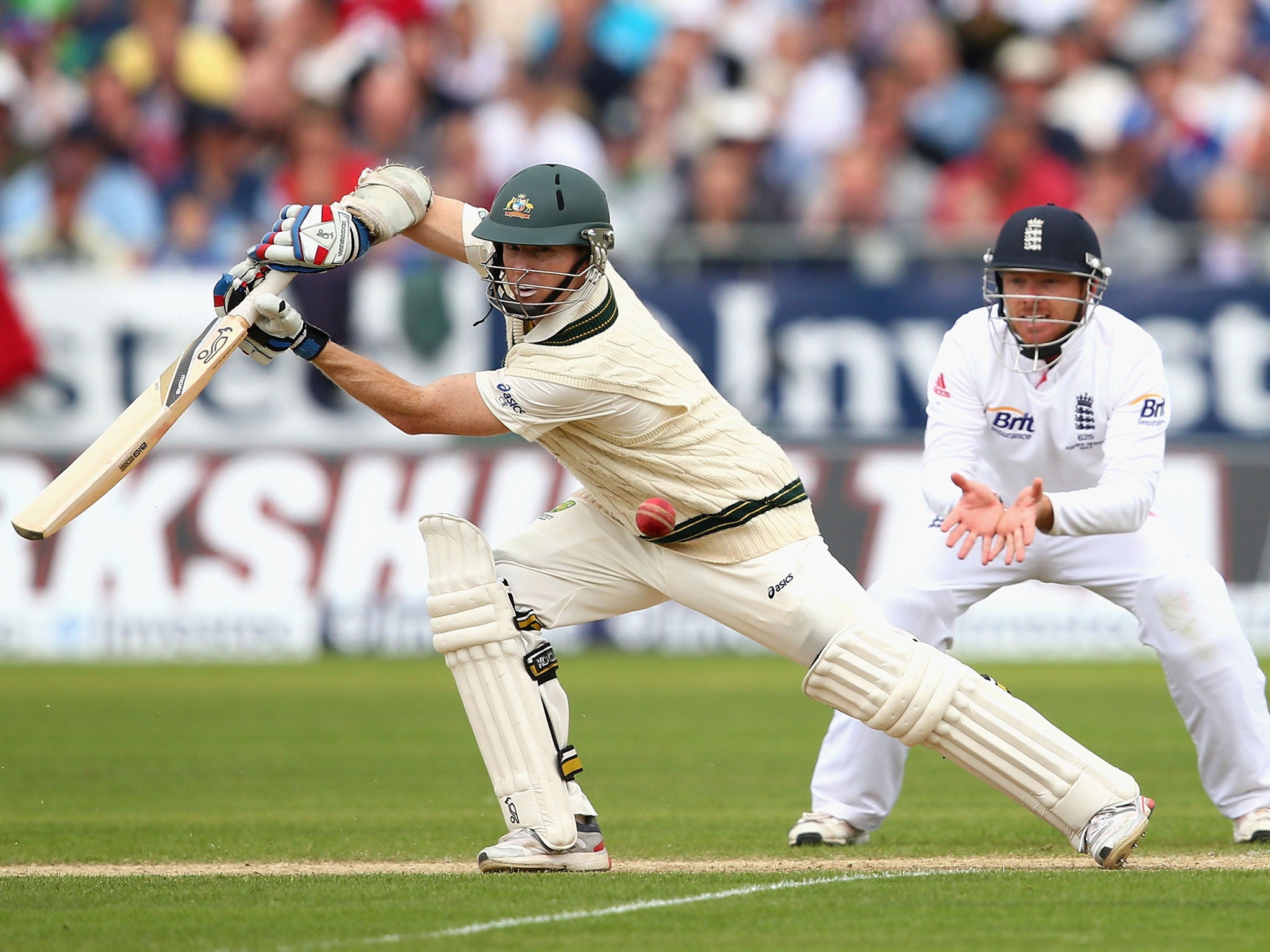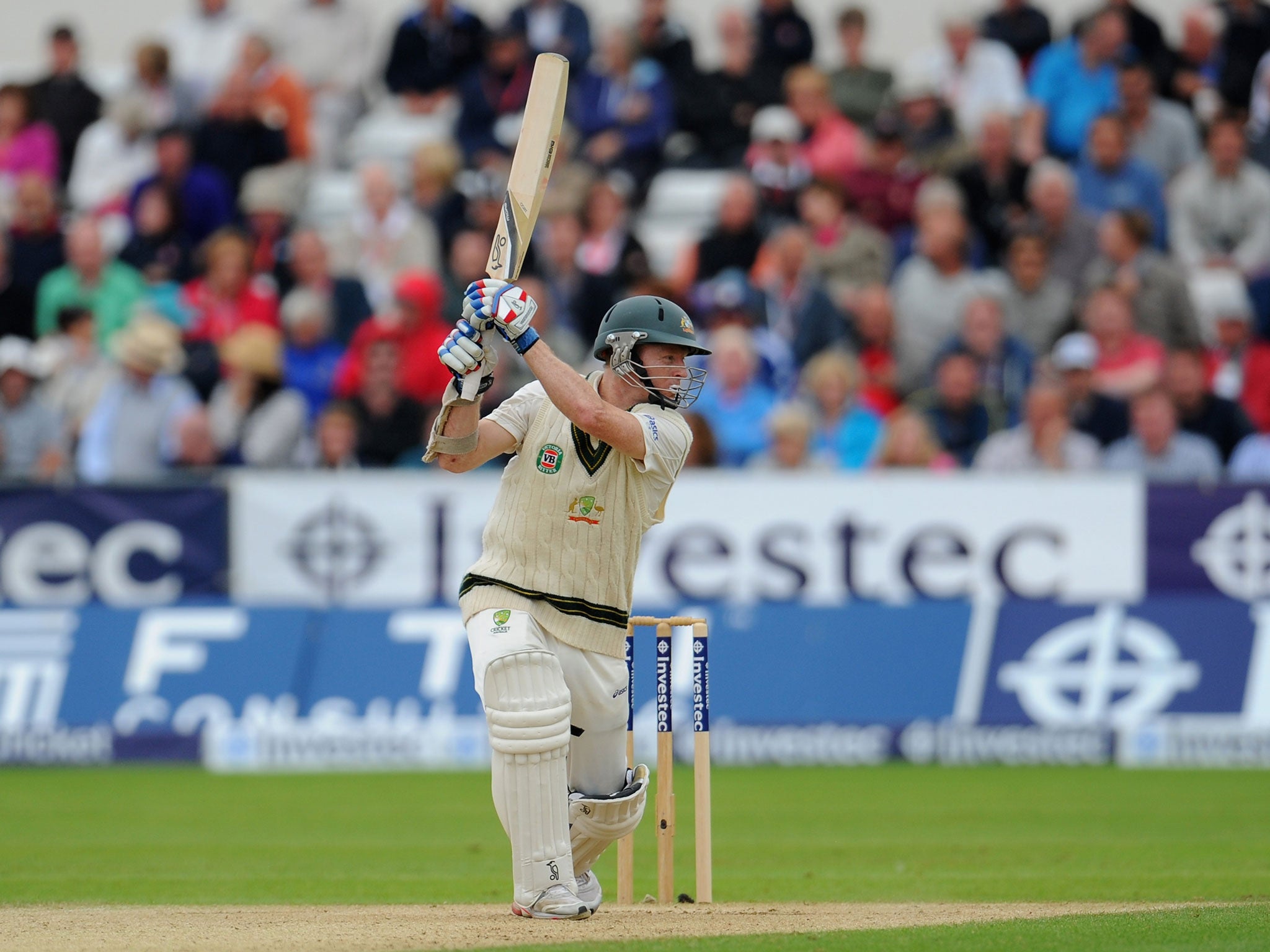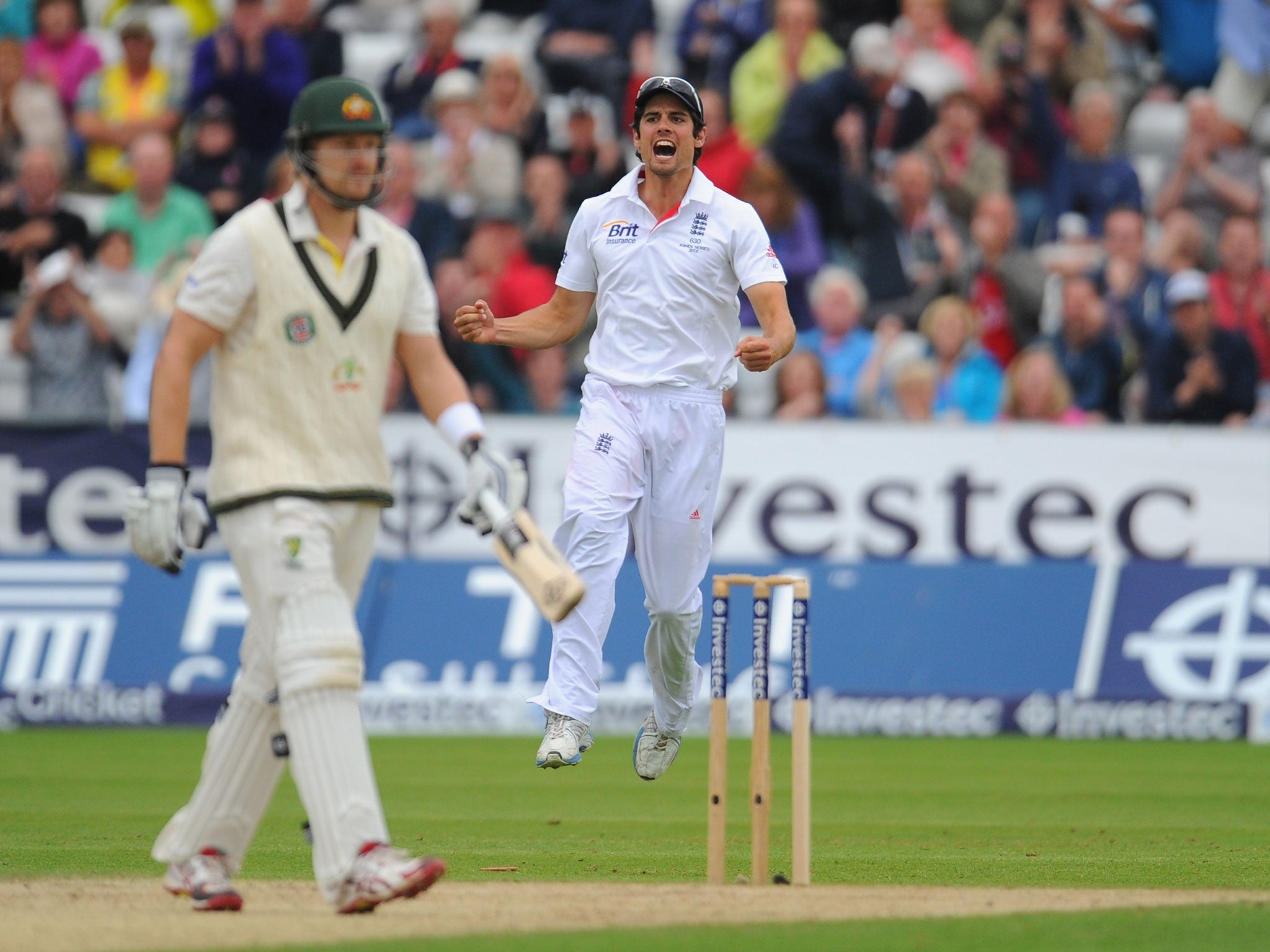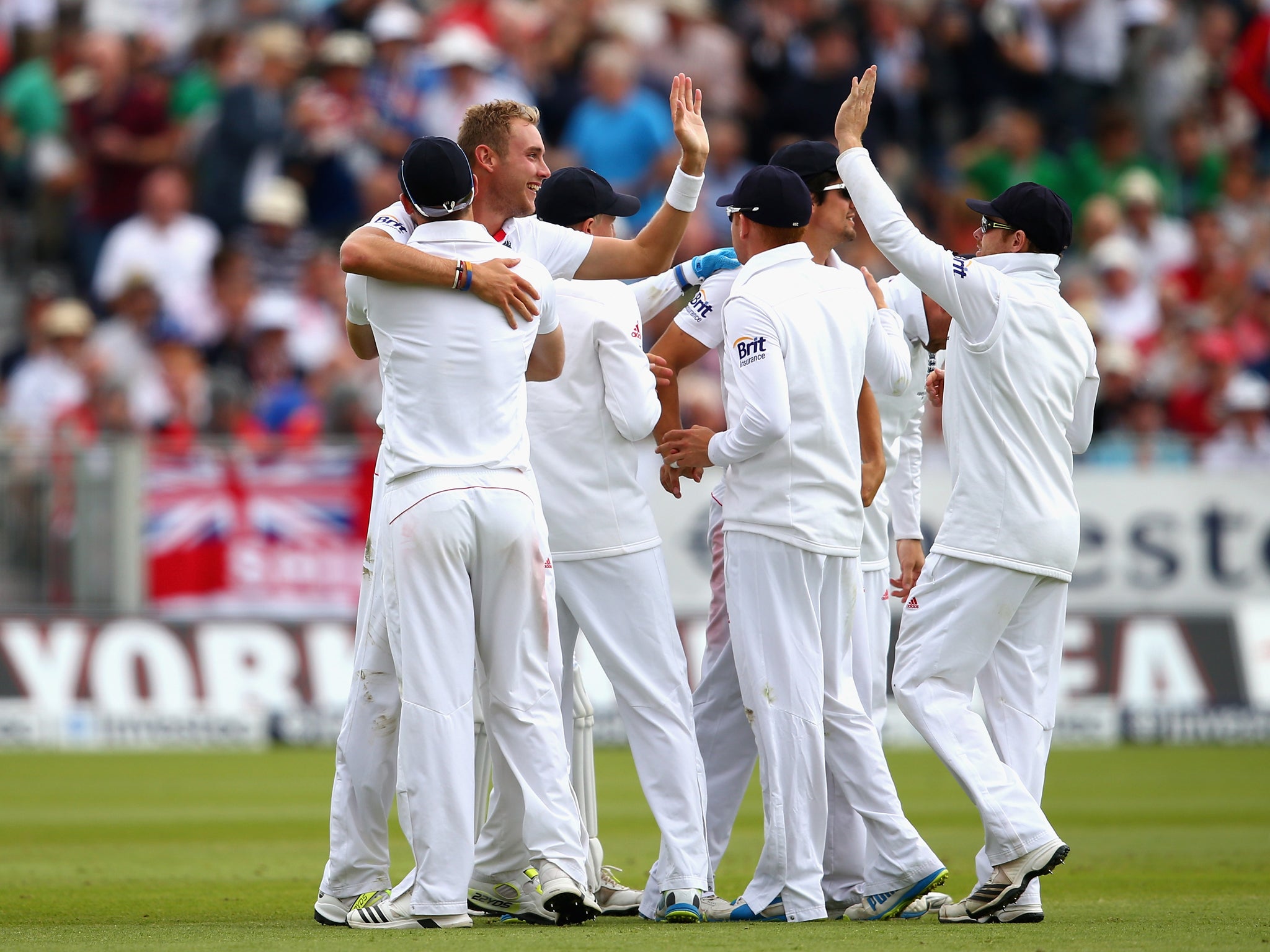The Ashes 2013: Aussie pair restore the art of batting after Stuart Broad tears apart top order
England 238 Australia 222-5: Chris Rogers becomes third-oldest Australian to score maiden Test century and finally discovers a patient partner in Shane Watson

Slowly, carefully, skilfully the craft of batting was restored yesterday. Just as it looked that the two teams competing in this Ashes series were finally ready to disintegrate in a flurry of impatience, stupidity and indiscipline Australia demonstrated that it need not be so.
On a pitch that had suddenly become fraught with peril and uncertainty the tourists repulsed England, the holders of the Ashes, throughout a long afternoon at the fourth Investec Test. It was rarely pretty or frothy but it was studious and determined. It had to be. They rode their luck. They had to.
Chris Rogers scored a painstaking, occasionally anxious, magnificently pragmatic maiden Test hundred at the age of almost 36. He shared a partnership of 127 from 279 balls with Shane Watson, who was occupying his third different position in the batting order of this series.
The pair had opened in Australia’s first five innings. They took Australia to a competitive position rather than prosperity but it was simply crucial to their cause. Australia were in the cart at 76 for 4, brought low by an excellent spell from Stuart Broad, in forlorn pursuit of England’s total of 238 which was beginning to seem mountainous. The ball was moving alarmingly off the seam, there were cracks in the pitch shifting like trees in a breeze.
When bad light brought the second day to a slightly premature close, Australia were 222 for five. All is to play for. The pitch will become no easier, the weather set no fairer.
Rogers and Watson decided that the best policy, the only policy likely to work, was to adhere themselves to the crease. They rotated the strike when they could, running 42 singles, but they tried to avoid big shots.
Unlike so many of their predecessors in this match, in this series, they concentrated, applying themselves to an arduous task. This must have been especially difficult for Watson whose natural game seems to be based on boom or bust, and often results in the latter.
Rogers was regularly beaten outside off stump as the ball jagged around. In one over from Broad he was three times left adrift. It was beautiful bowling and to the last ball of the over Rogers at last managed to find the edge, only for Graeme Swann to misjudge the trajectory and dive in front of Alastair Cook at first slip, failing to hold on with his right hand.

Rogers had already been the subject of two reviews in one over, the first called by England to have an lbw verdict reversed, the second by the batsman to have a caught behind verdict overturned. This caused further apoplexy for followers of the Decision Review System since the ball actually hit Rogers’ pad and he was saved from being lbw only because the ball was not deemed to be going on to hit a large enough area of the stumps.
What it might be doing for the confidence of umpire Tony Hill, who has had a difficult series, is a matter for conjecture. But he looks like a man who is declaring his verdicts reluctantly and hesitantly, in the hope rather than the certainty that he might be right.
All this toing and froing might have terminally disrupted a player of lesser vintage. But Rogers simply played to his strengths, almost certainly encouraged by his innings of 82 at Old Trafford in the Third Test. He clipped, he cut when he could, occasionally he drove, sometimes he missed.

Only when he approached his grand landmark did he seem to be affected. Shot selection went to the dogs and his anxiety was plain. Twice he might have been caught behind, once Matt Prior claimed a stumping. For 19 balls, Swann pinned him down. On the dressing room balcony his captain, Michael Clarke, frowned in hesitant anticipation.
When Watson was out, glancing a ball down the leg side for Prior to take an acrobatic catch, Rogers’ heart went a little further into his mouth. But at last he had received one that was straight enough and full enough to sweep. Down on one knee he went and the ball skimmed to the boundary.
There was no ecstatic celebration, no punching of the air, or running round the arena as other have been prone to do recently. It took him two or three seconds to take off his helmet and raise his bat which, eventually, diffidently, he did. When you have waited so long for a moment like this there is much to ponder.
At 35 years, 344 days, Rogers is the 17 oldest player to make a maiden Test century, the third youngest Australian and the youngest since Arthur Richardson also did it against England in a northern Test match, at Headingley in 1926 when he was 37 years 353 days old.

Broad had laid waste to the innings after England lost their last first innings wicket in the day’s second over. The pitch had been slow on the first day but had seemed bereft of demons. Suddenly demons were queuing up like a night out at a vampires’ fancy dress party.
It was seam rather than swing which was the main enemy and it needed batting of absolute resolution and solid method to deal with. Broad is a bowler who takes wickets in clutches and he sensed quickly that conditions were in his favour.
He bowled David Warner who did not whether to play or leave, stick or twist and before he could finally decide had his off stump castled. Usman Khawajs was similarly in two minds and the ball grazed the toe of his bat on the way through to Prior.
The next wicket was the biggest and Clarke’s shot was crazy given what was happening. He composed a reckless drive to a ball moving away without moving his feet and Cook hung on to a sharp catch. Steve Smith, composed awhile, was outfoxed by Tim Bresnan soon after lunch. Australia needed a calm head. They got two.
The Rogers appeal
1. England appeal for catch behind against Rogers when he is on 20 and he is given out by umpire Tony Hill.
2. Rogers asks for review of decision.
3. Hot Spot shows he did not hit it so he is not out caught.
4. The ball is seen to have hit his back pad. The third umpire then uses technology to check if he was lbw.
5. Hawk-Eye indicates that the ball would have hit the stumps but not full on.
6. But he is not out lbw because England originally appealed for a catch, which is what the umpire adjudicated on.
7. However, had Hawk-Eye shown the ball hitting the stumps more fully, the third umpire would have advised the on-field umpire that Rogers should be out lbw.
8. Had England appealed for lbw instead of caught the umpire would have had to adjudicate on that.
9. Had the umpire said it was out lbw and Rogers had asked for a review, the decision would have stood.
10. Had the umpire said not out and England had reviewed it, the decision would also have stood. As it was, Rogers went on to make 101.
Stephen Brenkley
Join our commenting forum
Join thought-provoking conversations, follow other Independent readers and see their replies
Comments